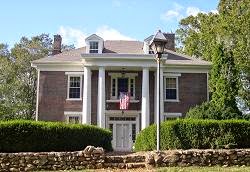Are you thinking about buying a home and want it to be your "dream home"? Let's think about your dream home, the financial impact, and your best path to one of the largest financial obligations that you will ever make.
Be practical: Remember that “the perfect home” may not be available. So develop some search criteria. Make a list of the features most important to you and your lifestyle, prioritize your list and decided where you can be flexible. Then find a home that offers your "must have" features. Remember that compromise is a virtue! Paint, appliances and landscaping are items that you can take on one at a time as DIY projects. A little sweat along the way can turn into a good amount of equity when you are ready to sell.
Be budget wise: When you get pre-approved for a loan, you
may be surprised by the amount for which you qualify. Be careful that you
aren’t stretching to the last penny allowed by the lender. Be sure that you
work with an amount that you feel comfortable spending every month. Taking on a
mortgage that stresses your budget can cause you unnecessary stress in your
relationships at home and work. So take an honest look at your budget.

Be selective: When you buy a home, you are truly “putting down roots”. Unlike renting, your contract isn’t short term. Usually buyers go with a 30 year mortgage. According to a recent article, “Buy or Rent”, published by Zillow, the average time to break even in highly populated areas, is a little over two years. In less populated areas, the break even point may be closer to 4 years. So buy where you are prepared to stay for a while. Buy a home that will be easy to maintain. Remember to consider the upkeep - utilities, repairs and general improvements. Then keep it maintained. Doing a little work as you go will have you prepared when you are ready to sell.
 Be an investor: Realize that most Americans will buy more than one home during their lifetime. And the average turnaround time is only seven years. So buy the home that is comfortable for your budget and set time frames to trade up. Keep your eyes on the ball and you can “buy-up” to your dream home and be proud of your path as well.
Be an investor: Realize that most Americans will buy more than one home during their lifetime. And the average turnaround time is only seven years. So buy the home that is comfortable for your budget and set time frames to trade up. Keep your eyes on the ball and you can “buy-up” to your dream home and be proud of your path as well. 








